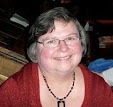Susan Vreeland does a wonderful job in creating the back story of the attendees at the luncheon. In 1881 Renoir was a struggling artist both in the artistic sense and in a personal sense. He had been painting in the impressionistic style, but had wanted to extend his notoriety beyond that group, especially after the critical review of Emile Zola. He had painted numerous portraits, but knew that he needed another large painting to follow the Ball. At the urging of his patron, Madame Charpentier, he decided on a painting that would take place at the Maison Fournaise. And so he began to assemble the models. They came from every walk in life, including artists, actresses, lawyers, the children of the owner of the cafe, a seamstress, and a dancer. Over an 8 week period of time he painted them and the setting of the party. He was really under a self-imposed deadline due to the natural lighting and a nautical festival that would be taking place there.
Thirteen of the people in the painting are easily identified, but there is a mysterious person in the center of the work, almost hidden. Renoir was consumed with the fact that he needed to have 14 people appear so as not appear to be imitating The Last Supper. Could it be that he painted himself in? Prominently seated in the fore of the painting is Aline with her dog. She would eventually become Renoir's wife. The lives of the other models give a peak into the cultural, historical, and social mores of the time. Vreeland in her narrative gives an insight especially in to the issue of women's rights and the women who strive to assert them whether it be in subservience to a man or the right to an abortion.
The description of the food that is served prior to Renoir's painting on the Sunday afternoons leaves one craving some of the dishes. Chapter 17 begins with such a description of a Charlotte Malakoff:
"They’d sung a few songs while eating the Charlotte Malakoff, a mold of strawberries, ladyfingers soaked in rum, and almond cream, and now they were ready to take their poses."
This was the inspiration for the dessert at the evening's book club discussion.
There is also a bit of a romantic triangle between Renoir, Aline, and Alphonsine Fournaise, both of whom were in love with Auguste and he with them.
This was a delightful book to read and one that you should read with the painting at your side. The characters are well developed, the setting well described, and the research extensive. I will be looking to read one of Vreeland's other books.



No comments:
Post a Comment